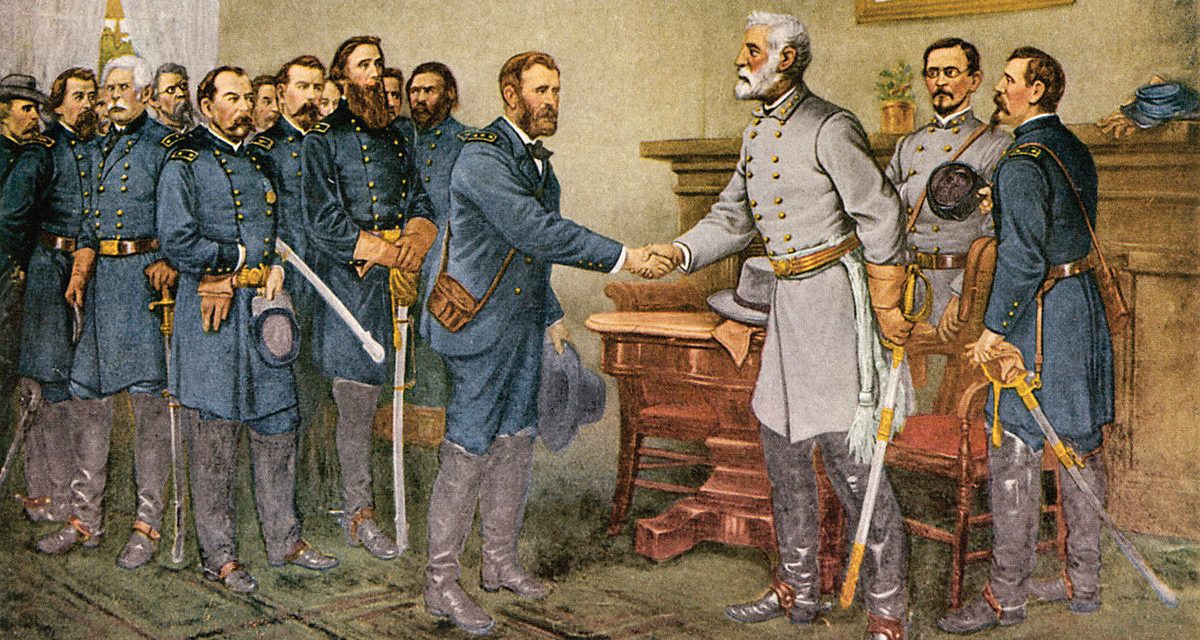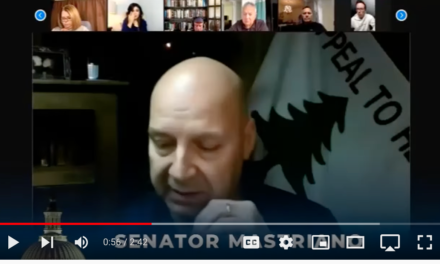The American Civil War developed into a contest over control of Richmond, Virginia, which was the capital of the Confederacy. For the Union generals, General Robert E. Lee’s Army of Northern Virginia was standing in the way, so it really was an either/or situation. Seizing Richmond or its railway hub at Petersburg would starve Lee’s army of supplies and lead to its destruction. Alternatively, defeating Lee’s armies in the field would lead to the capture of the city. As it turned out, a war of attrition accomplished both at the same time.
I believe we’re nearing the end of a second “Cold” Civil War. The rebels are familiar. They’re dominated by southerners of a culturally conservative persuasion. They stubbornly cling to an outworn set of values and way of life that opposes science and reason, as well as progress in civil rights. For decades, they have tied the federal government in knots, taking advantage of an outsized portion of power enshrined to them in the Constitution.
People can differ about when the Cold Civil War started. Some might say it began when Barry Goldwater won the Republican Party’s presidential nomination in 1964. Others might mark 1968 as the moment when the Union splintered and went into a long retreat. A more logical starting point is 1980, when Ronald Reagan conquered the GOP for the conservative movement and started a revolution against the federal government. However you look at it, things didn’t get really serious until the Republicans seized control of Congress in the 1994 midterm elections. At least since that time, the Cold Civil War has been raging without much satisfaction for either side.
Beginning in 2000, our presidential elections have been persistently close, defined by a narrow and only modestly shifting set of battleground states. Congress staggered under the pressure, with the party in power unable under the old rules and norms to perform the most basic responsibilities. Judges and executive branch appointees could not be confirmed. Budgets could not be passed. Bills could not be paid. Pressing national issues could be not addressed, let alone resolved. In short, it has looked a lot like the battles fought between the Army of Northern Virginia and the Army of the Potomac. Advances are few and come at a high cost, only to be followed by retreats and reorganization.
Donald Trump’s election, based on his wins in Wisconsin, Michigan, and Pennsylvania, reminds me General Lee’s advance to Gettysburg. It was an unexpected incursion that made clear that victory for the Union was further away than anyone hoped. But in the 2018 midterms, it became clear that the GOP’s advances were not sustainable, and the Union began a pursuit back into the enemy’s territory.
The last two years seem a lot like General Ulysses S. Grant’s Overland Campaign which began with the Battle of the Wilderness in May 1864 and ended with the evacuation of Richmond in April 1865. At first, Grant did not experience any outright success, suffering more casualties and often fighting to a stalemate rather than achieving his objectives. But he kept the pressure on and continued to maneuver until he had weakened the enemy to a point that they could no longer resist.
By the winter of 2019-20, it was clear that Trump was no longer viable. Impeachment was laid on the table, effectively as generous terms of surrender. GOP officers would go unmolested, allowed to keep their jobs if only they would abandon their support of the cause. That was effectively the beginning of the final phase–the Appomattox Campaign.
If the GOP had any hope of a miracle, it ended with the outbreak of the COVID-19 pandemic. The Republicans’ internal polling points to a coming catastrophe up and down the ballot. Texas may be slipping away and Trump is no longer favored in Kansas.
Isolated and besieged, the president held an Independence Day celebration on July 3, 2020 at Mount Rushmore where he warned of a “‘left-wing cultural revolution’ that aims to rewrite U.S. history and erase its heritage.” It was the same rhetoric used by secessionists to start the original Civil War. It was the same language the Confederacy used throughout the war to maintain morale and resolve. At Appomattox, General Robert E. Lee said that he’d rather die a thousand deaths than surrender to Grant, but he did surrender. His only alternative was to watch his surrounded armies be annihilated.
Then, as now, the Confederates are correct that the Union aims to create a cultural revolution. They’re correct that the Union will erase much of the heritage of the old ways. This isn’t just about tearing down statues and renaming military bases and football teams. It’s about changing the way of policing, the old way of fueling our transportation and heating our homes, the old way of holding elections, the old way of delivering health care…
Radical changes are coming because they are necessary. Gridlock is never a permanent condition, and it was inevitable that eventually the old guard’s walls would crumble leading to a complete rout.
In some ways, this Civil Cold War will linger on just as the disputes of the original Civil War are still with us today. You can chalk some of it up to human nature. Some people are born conservatives and they’ll always act like Confederates no matter where they’re born or under what conditions they live.
But we’ll know the war is over when one of two things happen. When conservatives lose control of the Republican Party (or a new party arises to replace it), that is when the conservative movement will be dead. That will occur sometime not long after Texas turns blue.
The comparison to Richmond is striking. Like Richmond, the modern Confederates cannot maintain their power without Texas. Therefore, the effort to wrest control of Texas makes sense as it could lead to a swift end to the war. But it could be that Texas will not fall until its defenders are defeated in other fields. As was the case for Grant, it doesn’t much matter which comes first, as either result will come with victory.







